THORGEON Mercury vapour lamps
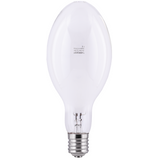


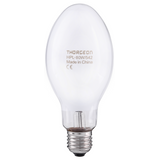

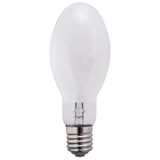
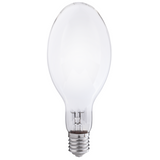
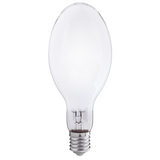

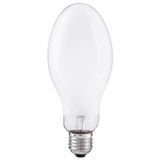
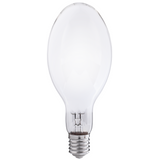
thorgeon mercury vapour lamps operating data and ranges
E27 and E40 bases cover 80 W 125 W 250 W 400 W classes with choke ballasts and optional ignitors depending on fixture design. Warm-up to full output takes roughly 3–5 minutes; hot restrike 6–10 minutes. Typical efficacy sits 45–60 lm/W with lamp lumen outputs around 3.6–4.5 klm at 80–125 W, 12–14 klm at 250 W, and 20–22 klm at 400 W. Nominal CCT is 3800–4200 K with CRI in the 40–60 band; phosphor types improve red rendering at a small efficacy penalty. Service teams stock thorgeon mercury vapour lamps by watt class and cap so ballasts and holders remain unchanged during night work.
thorgeon mercury discharge lamps fixture integration and gear
These sources run on inductive gear sized to supply the rated current at 230 V and include PFC capacitors to keep PF ≥0.85. In enclosed luminaires, thermal paths must hold bulb wall temperature to spec; poor cooling shortens life and accelerates colour drift. Ignition voltage requirements are modest compared to sodium or metal halide, which keeps legacy choke gear viable for many refurb-grade fittings. For retrofit planning, crews record ballast impedance and capacitor µF against the chosen thorgeon mercury discharge lamps so lumen and CCT remain stable across floors.
thorgeon industrial mercury lamps environments and optics
Factories and plant corridors use prismatic or batwing diffusers in IP65 housings; IK08–IK10 bodies protect against knocks. Ambient windows of −20…+35 °C are typical, with restricted mounting above hot equipment to avoid arc-tube overheating. Elliptical bulbs with phosphor suit general areas; clear bulbs pair with reflectors for high-bay punch. Maintenance teams tag thorgeon industrial mercury lamps by lumen class and optic so spacing charts are repeatable during shutdowns.
thorgeon hid mercury lights performance and lifecycle notes
Expect 12–16 k h service life when voltage and Tc are controlled; lumen maintenance is moderate, with 70–80 % output after mid-life depending on burning position. End-of-life colour shift toward green is a known indicator to schedule replacement cycles rather than running to failure. Surge immunity of 2–4 kV at the luminaire level protects gear on mixed boards. Where glare control matters, diffusers or deep reflectors keep high-angle luminance in check on thorgeon hid mercury lights without sacrificing aisle uniformity.
thorgeon high pressure mercury lamps electrical and mechanical specifics
Arc tubes use quartz with amalgam dosing; operating pressure rises with temperature, so avoid confined canopies without airflow. E40 caps demand torque control to prevent neck cracking; holders must be ceramic with heat-rated leads. Voltage rise over life is normal—ballasts need headroom so the lamp doesn’t drop out at end-of-life. Spec sheets for thorgeon high pressure mercury lamps list burning position, minimum enclosure volume, and restrike time so acceptance tests are straightforward.
thorgeon street lighting mercury lamps roadway use and retrofits
Historic poles and globes still run these sources where uniformity and colour continuity across districts are required. Typical mounting 6–10 m with 250–400 W lamps; spacing 25–40 m depending on optics and reflectors. When planning phased changeovers, check lantern photometrics and ballast health before moving to LED kits to avoid skewed baselines; until then, consistent batches of thorgeon street lighting mercury lamps keep night-time appearance stable while budgets stage upgrades.
thorgeon uv mercury lamps spectral applications and safety
Low-pressure 254 nm tubes handle coil and surface treatment; medium-pressure lamps deliver broadband UV for curing. Output scales with power density and cooling; quartz sleeves and interlocks are mandatory in occupied areas. Enclosures must prevent stray UV and include signage and timed access. For maintenance, teams pair drivers and sleeves by model so measured irradiance at the target plane stays within tolerance on thorgeon uv mercury lamps after relamping.
Product and application notes for engineers
- Gear and wiring: size ballasts by lamp current; verify capacitor health to hold PF and limit THD on shared boards.
- Thermal and position: respect marked burning position; check Tc after 60 minutes; ensure venting in enclosed heads.
- Photometry: clear vs phosphor lamps trade punch for colour; use reflectors for narrow aisles and diffusers for open areas.
- Maintenance: plan relamp intervals by hours and colour shift; clean optics during relamps to recover lumen.
- Environmental handling: lamps contain small mercury doses; use sealed transport tubes and certified recycling streams.
Selection criteria for B2B buyers
Define wattage and mounting height first, then choose clear or phosphor envelopes by task. Confirm holder type and torque, ballast ampere class, and capacitor value; record restrike expectations in method statements for outage planning. In outdoor stock, match lantern optics and glass type to the selected lamp so spacing tables remain valid across streets and yards.
Advantages of working with Bankoflamps
We align procurement to your maintenance windows. Quotes with EAN and MPN arrive in about an hour, with live EU stock shown before crews are booked. Your portal provides lead times, shipment tracking, and downloadable price lists with validity periods suitable for budget control. Trusted accounts use post-payment up to 30 days. We consolidate per route or bay so lamps, holders, gaskets, and gear caps arrive together, and an account manager cross-checks ballast class, capacitor µF, burning position, torque notes, and enclosure limits against your drawings—keeping relamps and phased retrofits site-ready across France, the Baltics, Germany, Spain, Italy, Belgium, and the Netherlands.